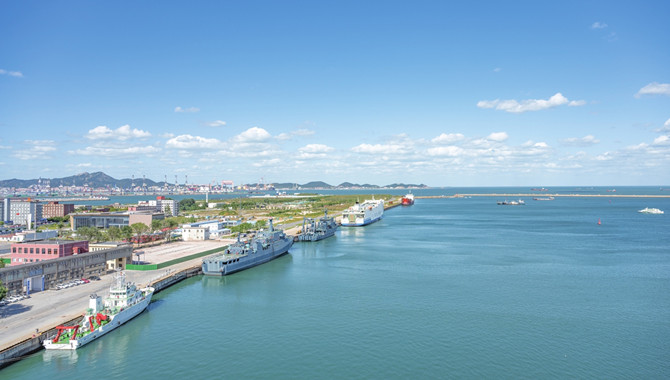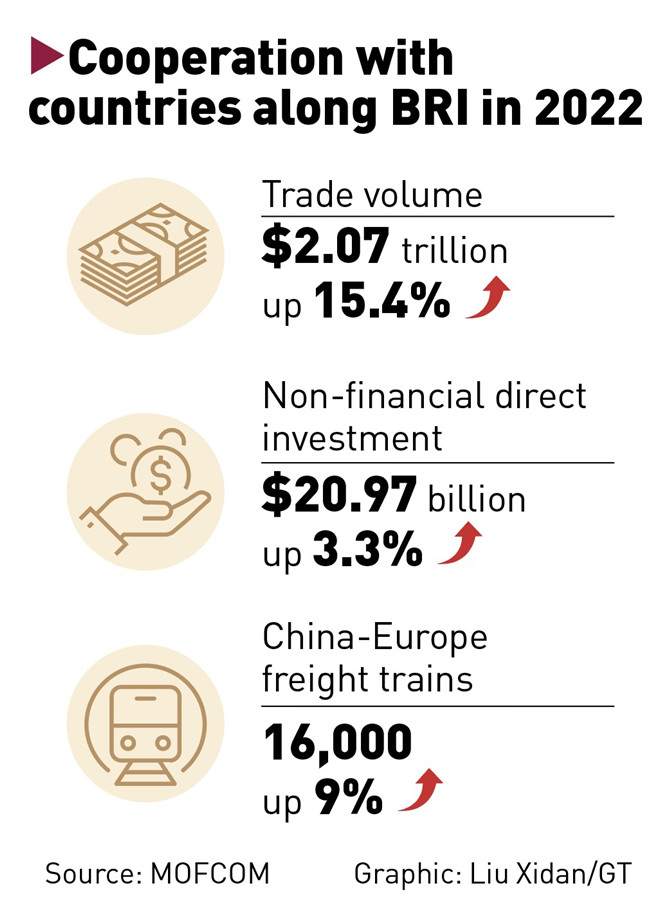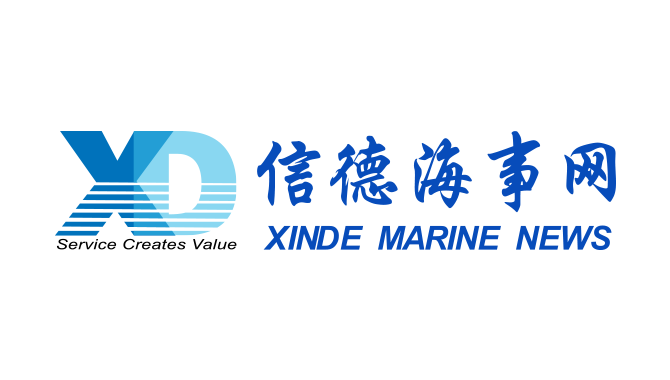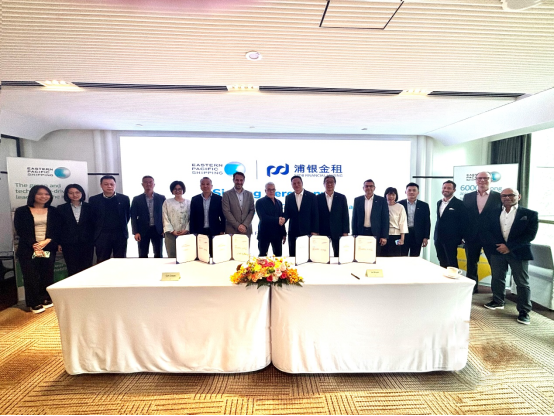
This year marks the 10th anniversary of the China-proposed Belt and Road Initiative (BRI), a global cooperation platform that demonstrates China's vision and provides solutions for the reformation of the global governance system and other multifaceted challenges. Reflecting on the development of the BRI over the last decade, there has been no shortage of evidence demonstrating its success, a momentum that relentless Western crackdowns and smears were unable to curtail.
Standing at this monumental juncture, the Global Times is publishing a series of articles to help readers understand the fruitful journey of the BRI over the last decade from multiple perspectives, and how the initiative will positively commence over the year. This is the third installment in the series, examining how traders, ports and producers in Qingdao, EastChina's Shandong Province, have witnessed the development of BRI at the frontline.
On Thursday morning, thousands of vehicles line up at an auto terminal in Yantai port, China's third largest commercial vehicle export port in East China's Shandong Province.
The vehicles will soon be loaded onto a roll-on/roll-off ship- a huge vessel that generally contains two to six decks and is designed primarily to be used to ferry wheeled cargo - after which port workers will examine whether the loaded vehicles are locked in tightly into their own individual freight spaces to safeguard safety before the ship's departure.
In Shandong ports, auto exports, in particular the shipment of new energy vehicles (NEV) made by Chinese automakers such as BYD and Wuling, has been one of the hottest forms of trade with countries and regions along the Belt and Road Initiative (BRI) such as Middle East, Russia, Central Asia and Europe, the Global Times learned.
Other Made-in-China engineering and manufacturing products are also seeing a spike in exports, partly fueled by the expanding footprints of key projects in the BRI countries.
In August 2022, a set of high-speed electric passenger trains and a testing train for the Jakarta-Bandung high-speed railway departed from Qingdao port and arrived at Jakarta Port in Indonesia, marking the first time China's high-speed rolling stock has been shipped abroad, and a milestone for the port in witnessing the development of the BRI.
This year marks the 10th anniversary of the China-proposed BRI. Over the last decade, Chinese ports, with extensive shipping routes that connect with almost every coastal country along the BRI route and the integration of the China-Europe freight train route that further stretches the infrastructure connectivity to the inland continent, have impacted what some industry observers described as the "golden channel" that facilitates global trade flows and industrial chain build-up.
In 2013, China proposed the Silk Road Economic Belt and the 21st Century Maritime Silk Road, and this was how the BRI, aimed at building a trade, investment, and infrastructure network that connects different regions along the ancient trade routes, took shape.
 Future business focus
Future business focus
Zhang Yong, vice general manager of the Qingdao Qianwan Container Terminal Co, told the Global Times on Wednesday that Shandong ports are important nodes in the BRI infrastructure network.
Shandong ports are placed at the junction between the Silk Road Economic Belt and the 21st Century Maritime Silk Road, while also serving as a bridgehead in trade connectivity with Japan, South Korea, and the Association of Southeast Asian Nations (ASEAN), which are all members of the Regional Comprehensive Economic Partnership (RCEP), the world's largest free trade deal that took effect in January 2022, according to a statement Shandong Port Group sent to the Global Times.
"We're tasked with the mission to promote China's cargo flow with the BRI countries, and bring more economic cooperation and investment to shore up the local economy," Zhang noted.
To date, the Qingdao port, China's fourth-largest port in terms of cargo handling ability, has opened about 80 to 90 shipping lines with countries along the BRI, out of the 220 routes, and those with Southeast Asia account for 20 percent of the total routes, according to data provided by the port authorities.
"In the next step, the Qingdao port will focus more on helping clients explore the Southeast Asia market, and further open more shipping lines with the BRI countries," Zhang told the Global Times on Wednesday.
The strategy is in line with a broad expansion in China's trade with ASEAN and BRI countries. In 2022, China's trade with countries along the BRI gained 15.4 percent year-on-year at $2.07 trillion, a new record, customs data showed.
In late February, Shandong Port Group inaugurated a Southeast Asia subsidiary in Singapore, a move that the group said aligns with the trend of BRI development and represents a step in opening up new market opportunities. "It will further leverage the advantage of Shandong ports to serve the Southeast Asia region," the group said.
In the last few years, the Qingdao port has opened a cold-chain shipping express service for the export of fruits and other agricultural products, such as bananas and pitayas, from Southeast Asia to China.
More qualitative growth
In 2018, the China-Europe freight train was inaugurated in Shandong. To date, the freight train, together with the port, has gradually established an international logistics corridor that connects with South Korea and Japan eastward, and links with the Eurasian continent westward.
"It, in particular, effectively elevates China's comprehensive cooperation with the SCO countries, and accelerates the implementation of RCEP, forming a new global platform to deepen the BRI cooperation," Su Zongyang, vice general manager of the combined transportation center under the Shandong Port Land-Sea International Logistics Group, told the Global Times.
The monumental development of the BRI has driven up the qualitative growth of sea-rail combined transportation in Shandong, some of which are transported by the China-Europe freight train.
One of the hottest transit routes involves Japan, South Korea, Southeast Asia, as well as Central Asia and Russia, where demand has been "quite high" so far this year. "Cargo from Japan, South Korea, and Southeast Asia is shipped to the Qingdao port, and then sent to Central Asia and Russia via the China-Europe freight train. It sometimes stretches further into Europe," Su explained.
According to him, commodities transported via the route include second-hand automobiles, auto parts, small home appliances from South Korea and Japan, as well as palm oil from Southeast Asia.
"The Qingdao port has an incomparable advantage in running the transit route thanks to its geographic proximity to South Korea and Japan, which takes only a day or so for sea deliveries to arrive. Also, the route offers a more competitively priced option for shipping goods to inland countries," Su stressed, while anticipating that the BRI will help the establishment of a smoother global supply chain in the future where China could play a more pivotal role.
In 2022, a total of 300 TEUs were transported by Shandong ports via sea-rail combined transportation, up 19.2 percent year-on-year. The Shandong ports aims to open six more sea-rail combined freights this year.
Source: Global Times
The opinions expressed herein are the author's and not necessarily those of The Xinde Marine News.
Please Contact Us at:
media@xindemarine.com



 China’s First Bulk Bunkering of Domestic Green Me
China’s First Bulk Bunkering of Domestic Green Me  Rotterdam and Singapore Strengthen Collaboration on
Rotterdam and Singapore Strengthen Collaboration on  MPA and CMA CGM Sign MoU to Enhance Sustainable Shi
MPA and CMA CGM Sign MoU to Enhance Sustainable Shi  China's Ports Surge Ahead: Major Container Terminal
China's Ports Surge Ahead: Major Container Terminal  Port of Hamburg: Growth in container throughput and
Port of Hamburg: Growth in container throughput and  EPS and SPDB Financial Leasing sign financing agree
EPS and SPDB Financial Leasing sign financing agree